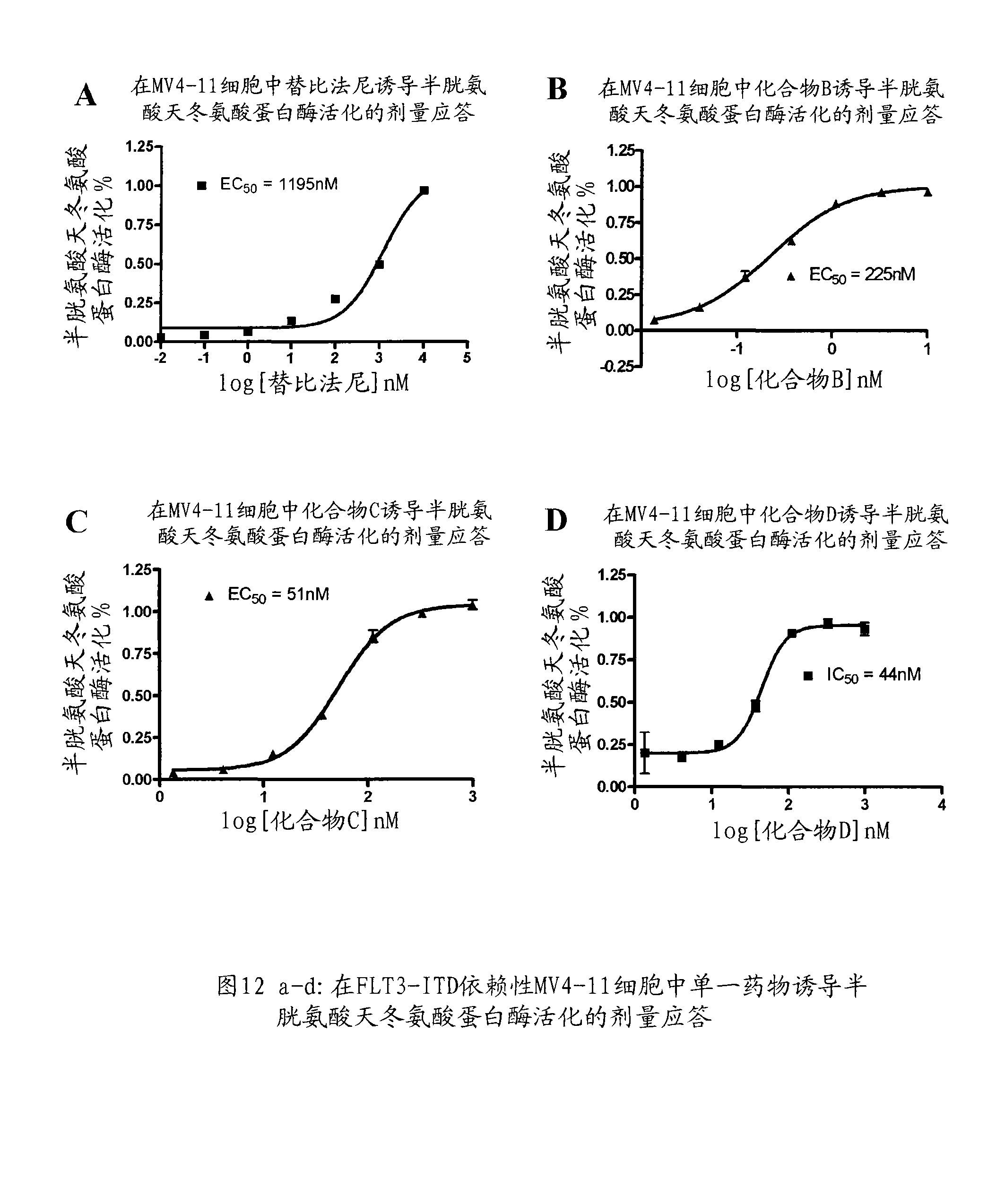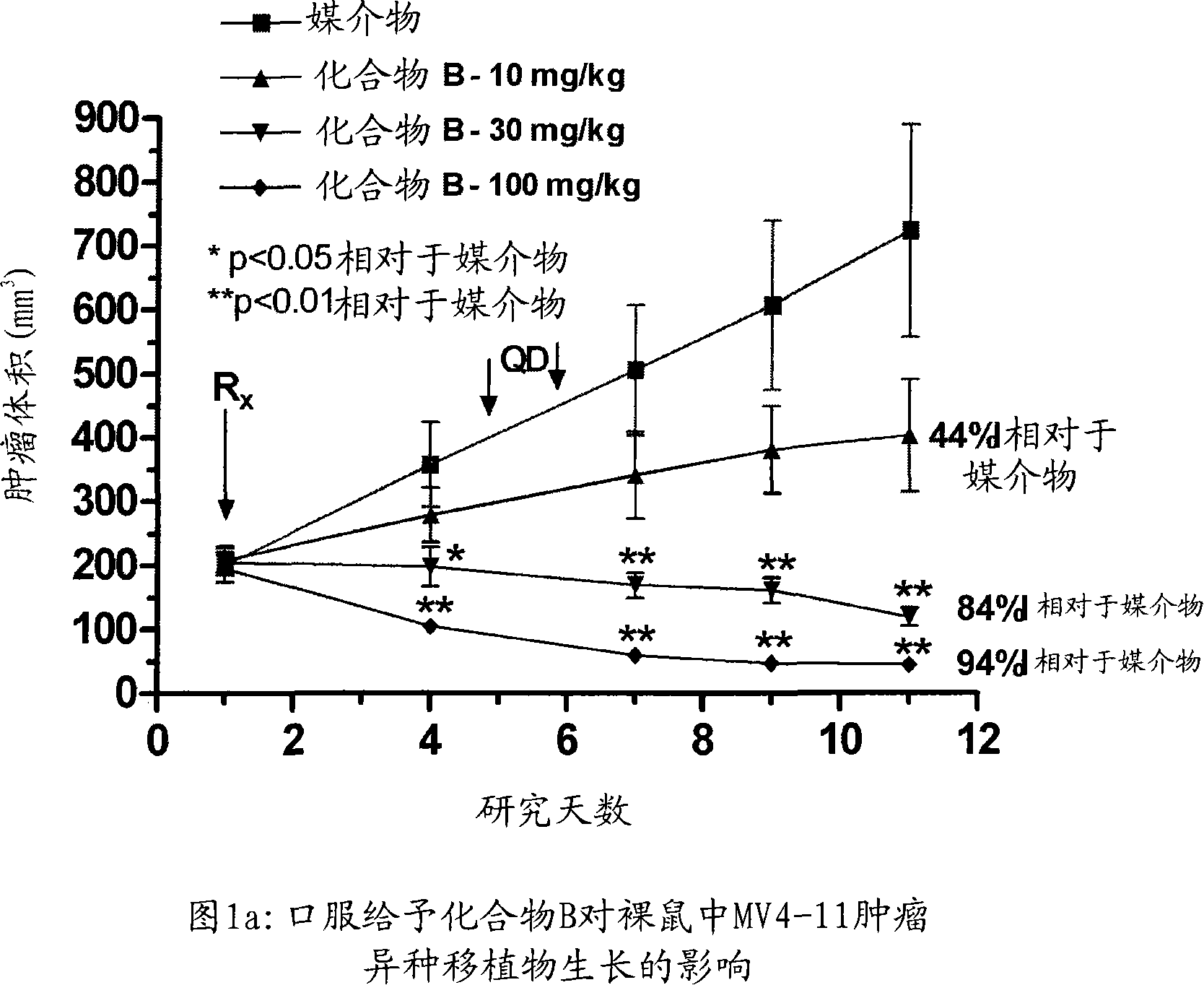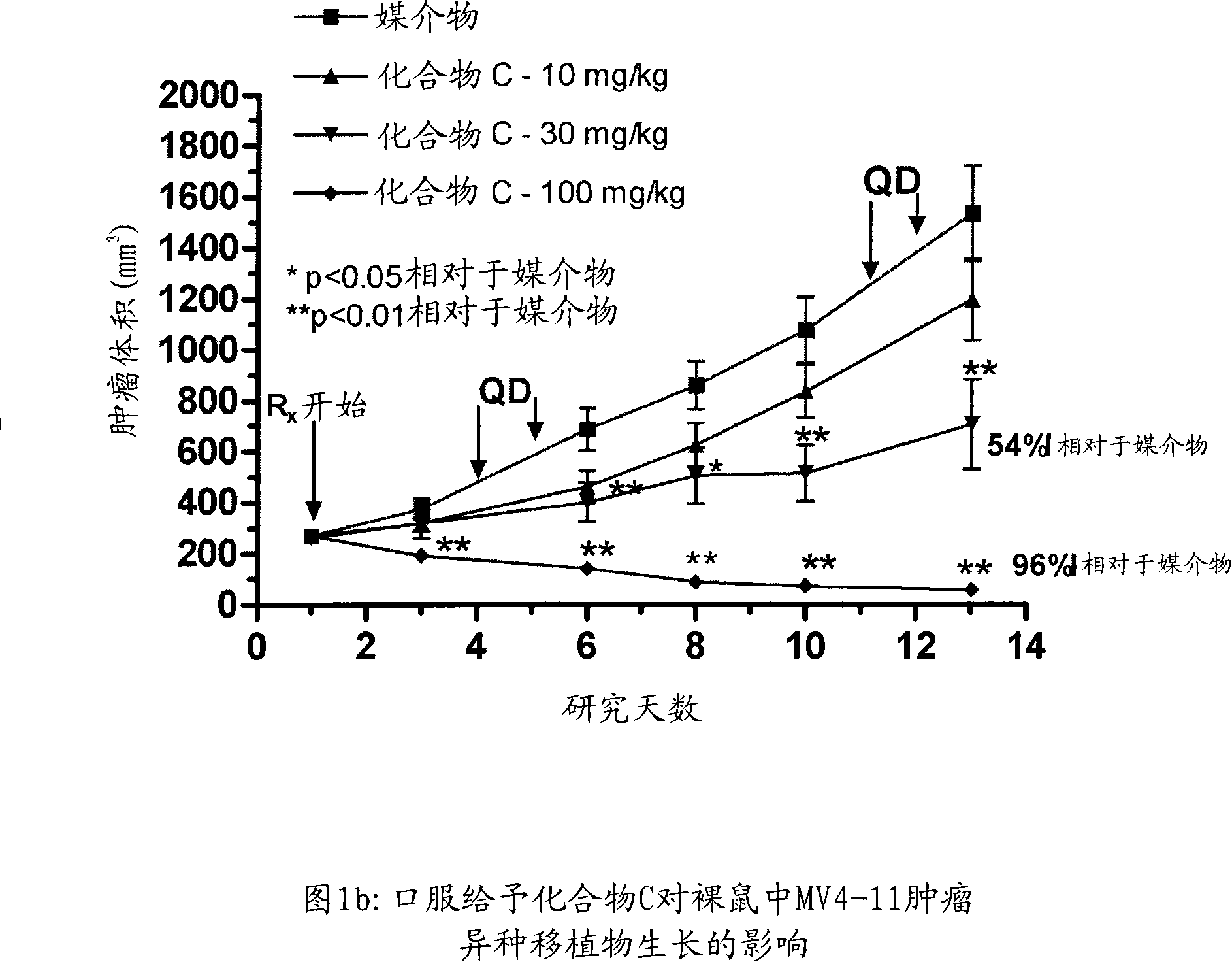Synergistic modulation of FLT3 kinase using a farnesyl transferase inhibitor
A kinase inhibitor, tyrosine kinase technology, applied in the field of synergistically modulating FLT3 kinase with alkylquinolines and alkylquinazolines, can solve the problem of shortened symptom remission time, reduced proportion of symptom remission induction, and poor overall prognosis And other issues
- Summary
- Abstract
- Description
- Claims
- Application Information
AI Technical Summary
Problems solved by technology
Method used
Image
Examples
Embodiment 1
[0719] 4-(6,7-Dimethoxy-quinazolin-4-yl)-piperidine-1-carboxylic acid (4-isopropoxy-phenyl)-amide hydrochloride
[0720]
[0721] a. (4-isopropoxy-phenyl)-carbamic acid 4-nitro-phenyl ester
[0722]
[0723] To a solution of 4-isopropoxyaniline (9.06 g, 60.0 mmol) in DCM (120 mL) and pyridine (30 mL) was added chloroformic acid in portions with stirring under brief ice bath cooling over ~1 min 4-Nitrophenyl ester (10.9 g, 54.0 mmol). After stirring at room temperature for 1 hour, the homogeneous solution was diluted with DCM (300 mL), washed with 0.6M HCl (1 x 750 mL) and 0.025M HCl (1 x 1 L). The organic layer was dried (Na 2 SO 4 ) and concentration to afford the title compound as a light purple-white solid (16.64 g, 98%). 1 H-NMR (300 MHz, CDCl 3 )δ 8.26 (m, 2H), 7.40-7.28 (m, 4H), 6.98 (br s, 1H), 6.87 (m, 2H), 4.50 (heptet, J=6.0 Hz, 1H), 1.33 (d, J =6.0Hz, 6H).LC / MS (ESI): mass calculated 316.1, found 633.2 (2MH) + .
[0724] b. Piperidine-1,4-dicarboxylic ...
Embodiment 2
[0740] 4-(6,7-Dimethoxy-quinazolin-4-yl)-piperidine-1-carboxylic acid (4-iodo-phenyl)-amide
[0741]
[0742] a. (4-iodo-phenyl)-carbamic acid 4-nitro-phenyl ester
[0743]
[0744] The title compound was prepared from 4-iodoaniline essentially as described in Example la except that the reaction was stirred at room temperature for 3 hours. The homogeneous solution was then partitioned with DCM and aqueous HCl essentially as described in Example 1a, except that a heavy precipitate formed in the organic layer. The organic layer was filtered to afford the title compound as an off-white solid (8.50 g, 61%). 1 H-NMR (400 MHz, CDCl 3 ) 8.30 (m, 2H), 7.68 (m, 2H), 7.39 (m, 2H), 7.30-7.20 (m, 2H), 6.98 (br s, 1H).
[0745] b. 4-(6,7-Dimethoxy-quinazolin-4-yl)-piperidine-1-carboxylic acid (4-iodo-phenyl)-amide
[0746]
[0747] 6,7-Dimethoxy-4-piperidin-4-yl-quinazoline (5.18 g, 19.0 mmol) (prepared essentially as described in Example 1d) and (4 -Iodo-phenyl)-carbamic aci...
Embodiment 3
[0749] 4-(6,7-Dimethoxy-quinazolin-4-yl)-piperidine-1-carboxylic acid (4-imidazol-1-yl-phenyl)-amide
[0750]
[0751] a. 4-(6,7-dimethoxy-quinazolin-4-yl)-piperidine-1-carbonyl chloride
[0752]
[0753] To a solution of 1.85 M phosgene in toluene (15.8 mL, 29.3 mmol) and DCM (32 mL) at -78 °C was added 6,7-dimethoxy-4-piperidine-4- Quinazoline (4.00 g, 14.6 mmol) (prepared essentially as described in Example 1d) was immediately followed by the rapid addition of DIEA (2.66 mL, 16.1 mmol) along the side of the flask over ~5 seconds. The flask was sealed and stirred at -78°C for an additional 5 minutes, then the flask was placed in an ice bath and stirred at 0°C for 30 minutes. The opaque, stirrable slurry was then poured into a mixture of DCM (70 mL), 0.5M trisodium citrate (60 mL) and ice (60 mL) and partitioned. The aqueous layer was extracted with DCM (1×50 mL), and the organic layers were combined and dried (Na 2 SO 4), and concentration under reduced pressure to...
PUM
 Login to View More
Login to View More Abstract
Description
Claims
Application Information
 Login to View More
Login to View More - R&D
- Intellectual Property
- Life Sciences
- Materials
- Tech Scout
- Unparalleled Data Quality
- Higher Quality Content
- 60% Fewer Hallucinations
Browse by: Latest US Patents, China's latest patents, Technical Efficacy Thesaurus, Application Domain, Technology Topic, Popular Technical Reports.
© 2025 PatSnap. All rights reserved.Legal|Privacy policy|Modern Slavery Act Transparency Statement|Sitemap|About US| Contact US: help@patsnap.com



